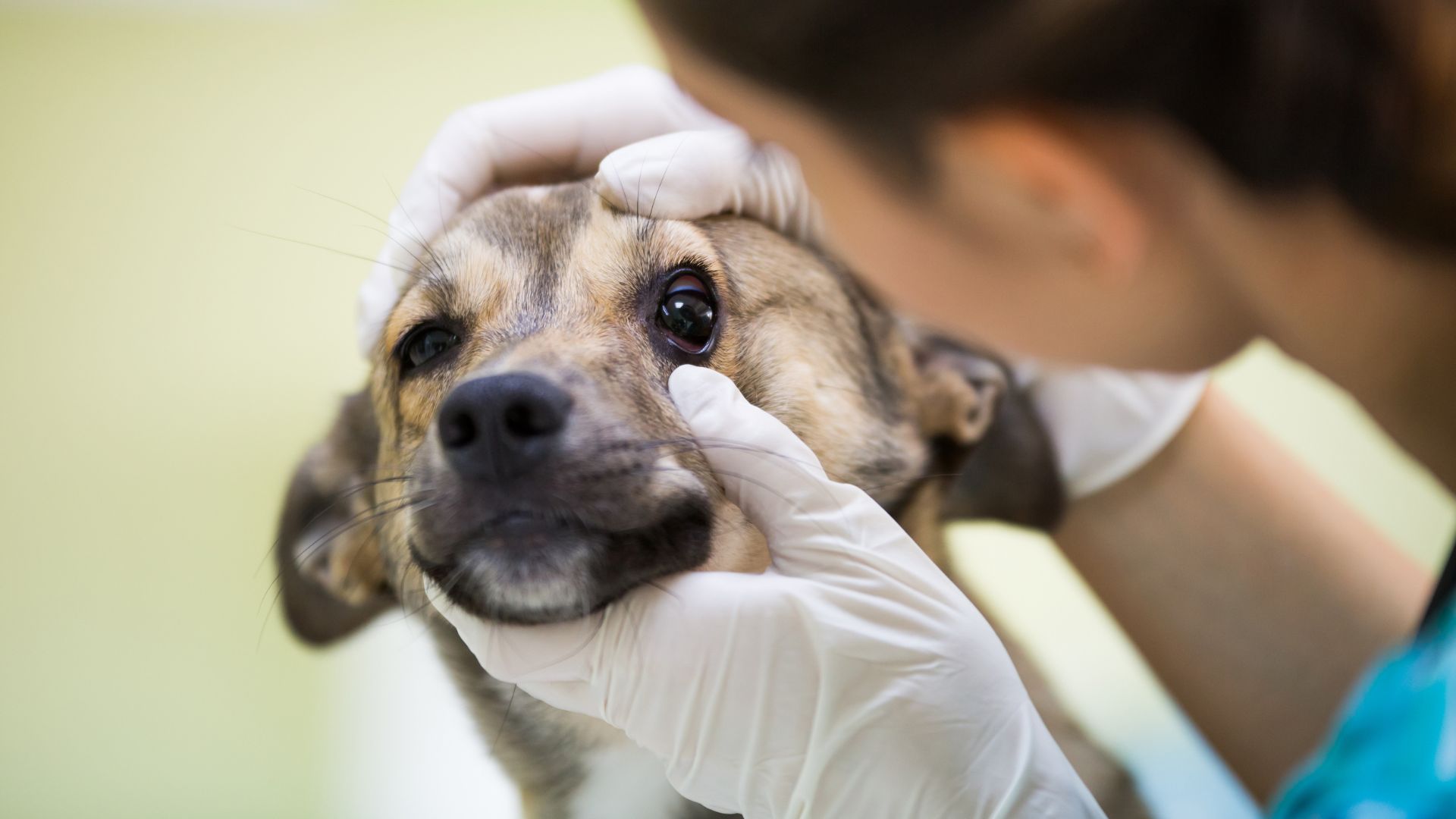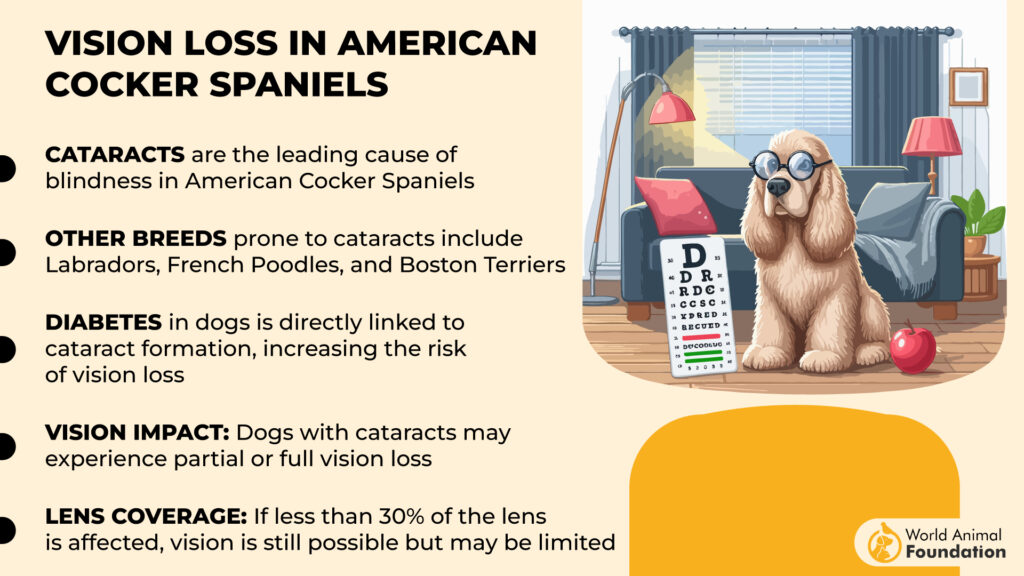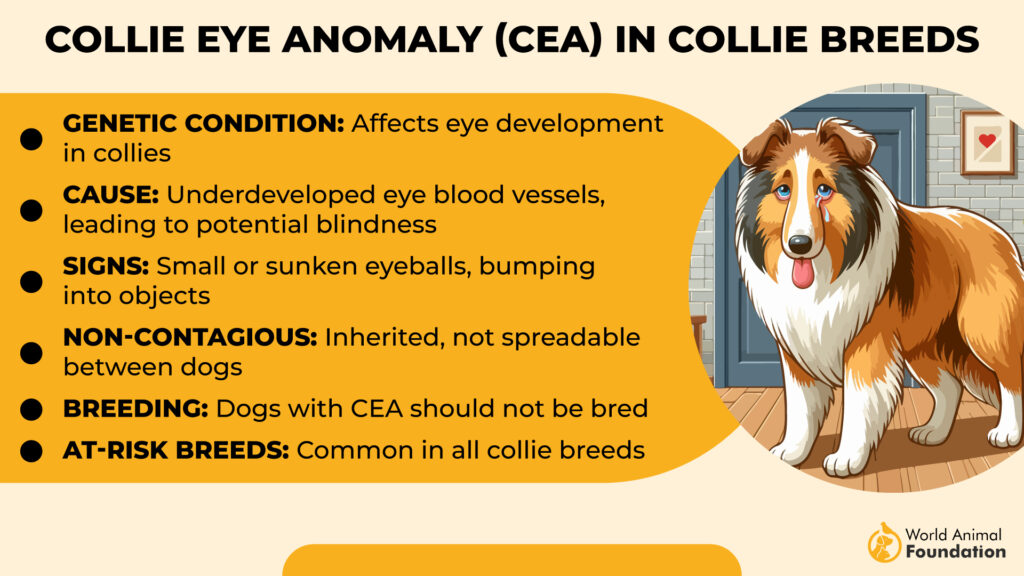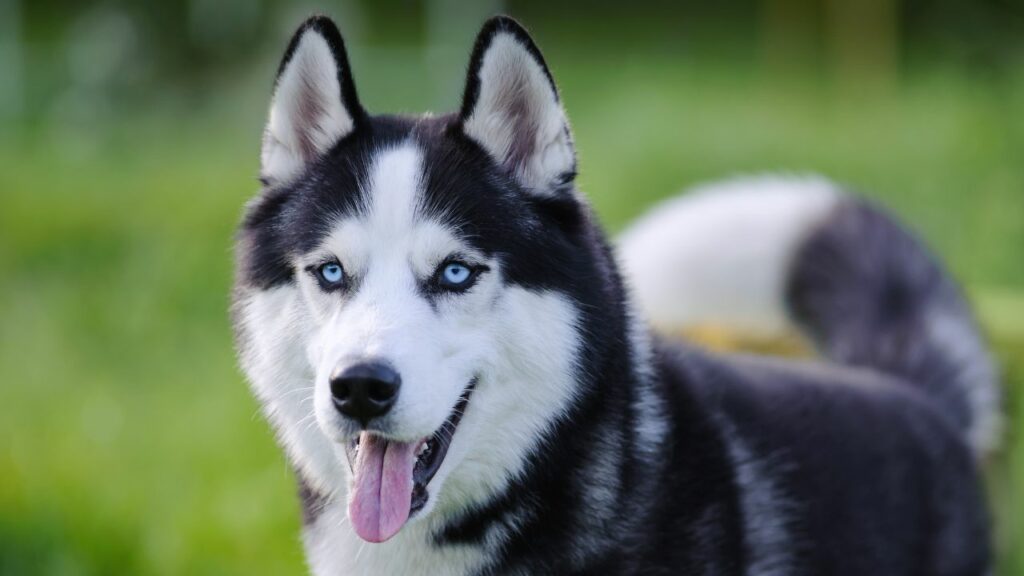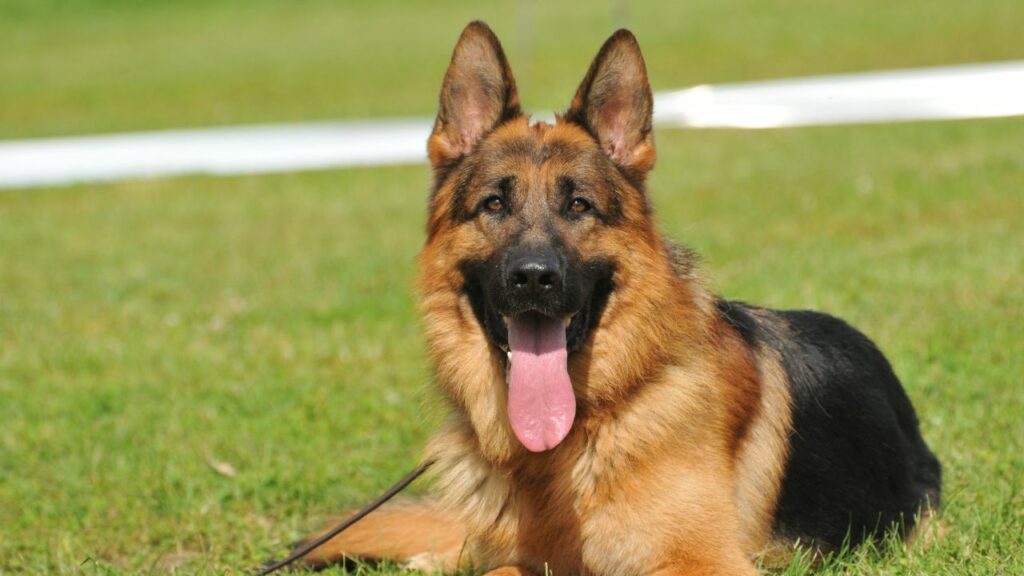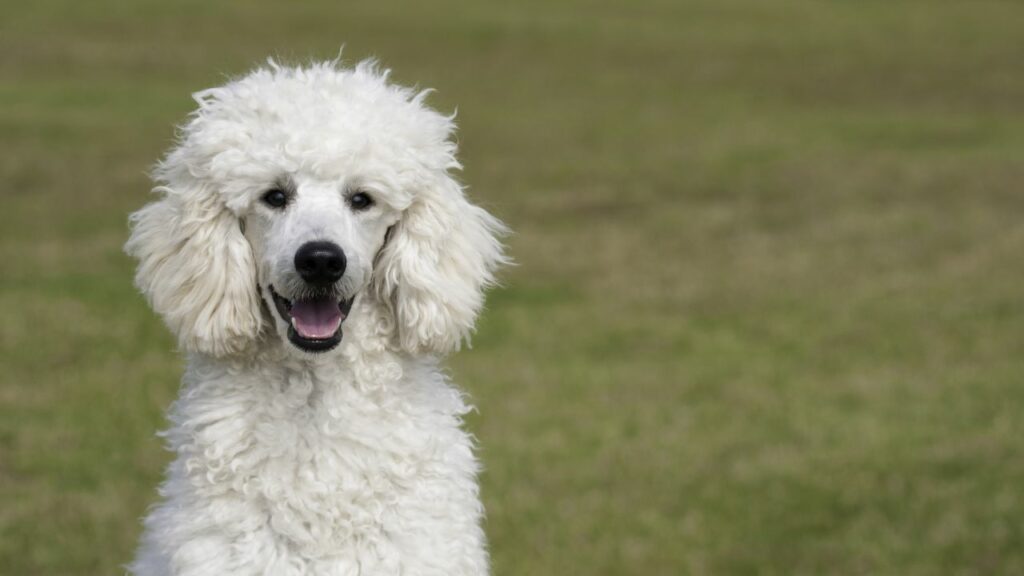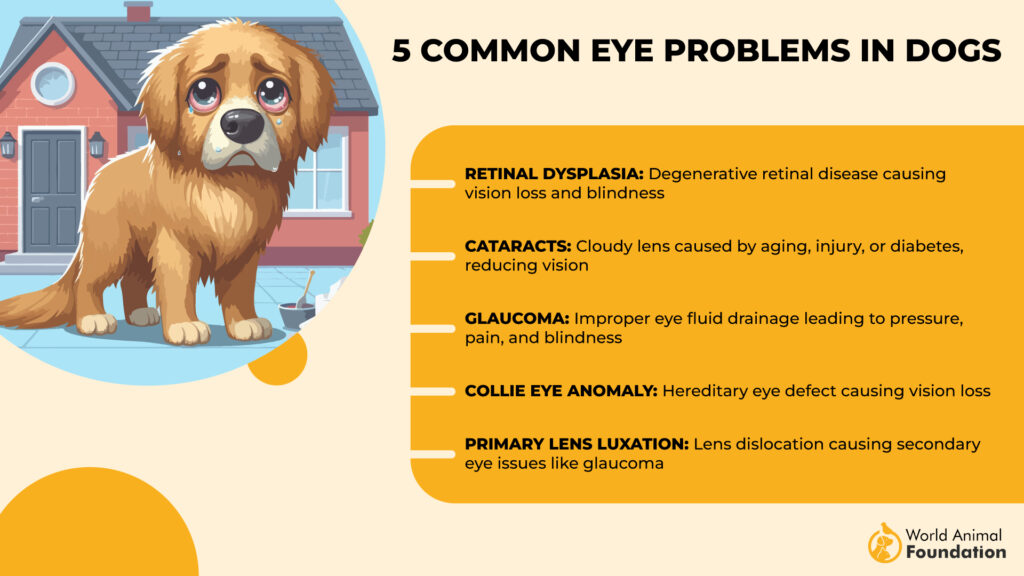A dog’s eyes are windows to their playful soul, but certain breeds are unfortunately predisposed to debilitating eye conditions. From the droopy-eyed charm of a Basset Hound to the intelligent gaze of a German Shepherd, genetics can play a cruel hand. Understanding which breeds are most susceptible to cataracts, glaucoma, progressive retinal atrophy, and other eye problems is crucial for responsible ownership. This knowledge empowers owners to make informed decisions about preventative care, early detection, and potential treatments, ensuring their furry companions enjoy a lifetime of clear vision and happy tail wags.
Just like humans, dogs can be prone to certain health issues, and unfortunately, eye problems are common in many breeds. These issues often stem from conditions that affect the normal anatomy and function of a dog’s eyes, which are very similar to our own. When any part of a dog’s eye is damaged or affected by disease, it can lead to a variety of problems, some minor but others potentially severe enough to cause vision loss or permanent damage if not treated promptly.
Dogs suffering from eye conditions may show signs such as redness, excessive tearing, swollen eyelids, squinting, cloudiness in their eyes, or discomfort when their eye area is touched. Since their eyes are incredibly sensitive, any irritation or pain can make them less playful and more withdrawn or irritable, signaling that something isn’t quite right. It’s heartbreaking to see our beloved pets in discomfort, which is why keeping an eye on their eye health is so important.
Addressing eye problems in dogs starts with identifying the underlying cause and seeking proper treatment before it worsens. Below, we’ve highlighted 10 dog breeds that are more likely to experience eye-related issues. If your furry friend is one of these breeds, it’s crucial to stay vigilant about their eye health to ensure they stay happy and healthy.
Dog Breeds Most Prone to Eye Problems
1. Pekingese
The Pekingese, a toy dog breed originating from China, is known for its affectionate and loyal nature, as well as its lion-like appearance. While they bring a lot of joy to their families, Pekingese dogs are unfortunately more prone to a variety of eye problems. Their distinctive facial structure, with prominent eyes, makes them particularly vulnerable to certain conditions that can be both painful and potentially lead to blindness if not treated promptly.
One common issue is glaucoma, a painful condition that can quickly result in vision loss. Another frequent problem is dry eye, or keratoconjunctivitis sicca (KCS), where the tear glands don’t produce enough moisture, leading to sore, itchy eyes and infections. Cataracts, especially in older Pekingeses, can cause blindness. Additionally, their protruding eyes make them more susceptible to injuries.
It’s crucial for Pekingese owners to stay vigilant about their dog’s eye health and seek immediate veterinary care if any signs of discomfort or irritation appear. Regular check-ups can help manage these issues before they escalate.
2. Bulldog
Brachycephalic breeds, like Bulldogs, are particularly prone to eye problems due to their distinctive short noses and flat faces. This facial structure, while endearing, can lead to a range of vision issues that owners need to be aware of. Some of the most common eye conditions in these breeds include cherry eye, conjunctivitis, and excessive eye discharge, all of which can be uncomfortable or even painful for your dog if not treated properly.
Cherry eye occurs when the gland of the third eyelid prolapses, causing dryness and irritation. This condition can be painful and, if left untreated, can lead to permanent damage. Surgery is usually required to correct it. Conjunctivitis, also known as pink eye, is another issue that affects many Bulldogs, resulting in redness, swelling, and discomfort. Additionally, Bulldogs are prone to eye discharge, which can be caused by allergies, infections, or even debris in the eye.
To help prevent these issues, it’s important to keep your Bulldog’s eyes clean and free from discharge and avoid environments that are dusty or dirty. Regular vet checkups are also essential to catch any potential problems early, ensuring your dog’s eye health is maintained and any necessary treatment is administered promptly.
3. American Cocker Spaniel
The Cocker Spaniel’s soulful, dark eyes are one of their most charming features, but unfortunately, these beautiful eyes can also be a source of discomfort when certain eye diseases develop. Cocker Spaniels are prone to several inherited eye conditions, including glaucoma, progressive retinal atrophy (PRA), and cataracts. Glaucoma in Cockers results from a problem with the eye’s drainage channel, causing a buildup of fluid and pressure that can lead to intense pain and vision loss if not treated quickly.
According to AKCCHF, Progressive Retinal Atrophy (PRA) is another common issue in Cocker Spaniels. This disease gradually causes the retina to deteriorate, leading to vision impairment over time. Cataracts, which cloud the eye’s lens and prevent light from reaching the retina, are also prevalent in Cockers. Cataracts are often linked to diabetes in dogs and can cause partial or total blindness.
It’s heartbreaking to see these once-bright eyes become a source of suffering, but with early diagnosis and regular vet checkups, many of these conditions can be managed or treated to improve your dog’s quality of life.
4. Collies
Collies are known for their intelligence, loyalty, and versatility, but they are also more prone to certain eye diseases. One of the main concerns with this breed is a genetic condition called Collie Eye Anomaly (CEA). CEA affects the retina, choroid, and sclera, and its severity can range from mild, with no impact on vision, to severe, potentially leading to blindness.
While there’s no cure for CEA, early screening and genetic testing can help reduce its occurrence in future generations. Another eye issue common in Collies is Persistent Pupillary Membranes (PPMs), where leftover blood vessels from birth form tissue strands that may obstruct vision. Most Collies with PPMs have mild cases, but in some, it can partially or fully block their vision.
Additionally, Collies with the Merle color gene may be at risk for microphthalmia, a condition where one or both eyes are smaller than normal, which can also impair vision. Regular eye exams and careful breeding practices are important for maintaining Collie’s eye health.
5. Labrador Retriever
Labrador Retrievers, like many breeds, are prone to hereditary eye diseases, with one of the most common being progressive retinal atrophy (PRA). This degenerative condition affects the retina and can ultimately lead to blindness. The specific type most common in Labradors is known as rod-cone degeneration (prcd-PRA), where the retina’s photoreceptor cells, the rods and cones, slowly deteriorate, causing gradual vision loss.
According to Purina Pro Club, PRA can manifest in two forms: early-onset retinal dysplasia, which is diagnosed in puppies, and late-onset PRA, typically occurring in dogs between three and nine years old. While vision loss occurs slowly over time, most dogs with PRA lose their sight completely within two years of diagnosis.
Since this condition is inherited, it’s crucial that Labradors with the affected gene are not bred, helping reduce the prevalence of the disease in future generations. Genetic testing and regular eye exams are key steps in preventing and managing PRA in Labradors.
6. Great Dane
The Great Dane, known for its gentle and social nature, is a devoted family companion, especially patient with children. However, like many breeds, these gentle giants can be prone to certain eye conditions that can significantly affect their quality of life.
One of the most common inherited issues in Great Danes is entropion, a condition where the eyelids roll inward. While it may sound minor, entropion can be quite painful, as the tiny hairs on the eyelid rub against the cornea, leading to irritation, inflammation, and potentially vision-impairing scar tissue if left untreated.
Eye health is critical for maintaining a Great Dane’s comfort and well-being, so regular vet checkups are essential to catch and treat issues like entropion early on. Proper care can help prevent more severe complications, ensuring your dog continues to live a happy, healthy life.
7. Siberian Husky
Siberian Huskies, with their striking blue eyes and thick, wolf-like coats, are undoubtedly beautiful dogs with boundless energy. However, they are prone to several eye conditions, making regular eye exams crucial, especially as they age. One common issue in Huskies is cataracts, which cause the eye’s lens to become cloudy and can lead to vision loss if left untreated. Routine check-ups can help catch this condition early and prevent further complications.
Another inherited condition seen in Siberian Huskies is corneal dystrophy, where abnormal material builds up in the cornea, causing cloudiness. Although it’s usually painless and slow to progress, it can affect vision over time, so regular vet visits are essential for monitoring.
Progressive retinal atrophy (PRA) is another degenerative eye disease that can eventually cause blindness. While there is no cure for PRA, early detection can help manage and slow its progression, allowing your Husky to maintain its quality of life for as long as possible.
8. German Shepherds
German Shepherds, known for their intelligence, loyalty, and protective instincts, are also prone to several eye conditions that owners should be aware of. One common issue is entropion, where the eyelid rolls inward, causing the eyelashes to irritate the cornea, potentially leading to inflammation and painful corneal ulcers.
On the other hand, ectropion, where the eyelid droops outward, leaves the eye exposed and more susceptible to irritation and infections.
In addition to these conditions, German Shepherds may also develop cataracts, glaucoma, and progressive retinal atrophy (PRA), all of which can result in vision loss if not treated in time. Regular veterinary check-ups are crucial for early detection and management of these eye problems, helping to prevent further damage and ensuring your German Shepherd maintains healthy vision.
9. Poodle
Poodles, known for their joyful and clever nature, are wonderful companions who love being the center of attention. However, like many breeds, Poodles—whether toy, miniature, or standard—are genetically predisposed to certain eye conditions, including glaucoma. This painful condition, if not caught early, can lead to blindness as fluid builds up in the eye. Symptoms of glaucoma include squinting, watery eyes, a bluish tint to the cornea, and redness in the whites of the eyes. Early detection is crucial to prevent long-term damage and alleviate the discomfort.
Cataracts are another common issue, especially in older Poodles, where the lenses of their eyes become cloudy, leading to vision loss. While many dogs adapt well to losing their sight, regular check-ups are important to monitor eye health.
Poodles are also prone to a condition called distichiasis, where extra hairs grow inside the eyelid and rub against the eye’s surface, potentially causing corneal ulcers and chronic pain. Fortunately, this condition is treatable, and once the hairs are removed, most Poodles recover well. Keeping a close eye on your Poodle’s vision can help prevent discomfort and ensure they remain happy and healthy.
10. Boston Terriers
As a proud Boston Terrier owner, it’s essential to be aware of the common eye problems that can affect this breed. Boston Terriers are prone to several eye conditions that can range from minor discomfort to serious health concerns, potentially impacting their vision and overall well-being. One frequent issue is cherry eye, or third eyelid prolapse, where the gland in the third eyelid becomes visible and requires treatment to prevent discomfort and complications.
Corneal ulcers are another common problem in Boston Terriers, resulting from damage to the cornea’s surface, causing pain, redness, and eye discharge. Cataracts are also prevalent, especially as Boston Terriers age, clouding the eye’s lens and leading to vision loss. Additionally, glaucoma, a condition that causes increased pressure in the eye, can result in irreversible vision loss if not addressed. Progressive retinal atrophy (PRA), a genetic condition, also affects the breed, gradually deteriorating the retina and leading to blindness.
Regular eye exams and proper eye care are crucial in detecting these issues early, ensuring your Boston Terrier’s vision and eye health remain intact. Keeping their eyes clean and practicing good hygiene can go a long way in preventing infections and maintaining your dog’s overall comfort.
Conclusion
Eye problems in dogs can significantly impact a dog’s vision, and many breeds are more susceptible to these issues than others. Pet owners need to be especially vigilant when it comes to their dog’s eye health, as conditions like primary and secondary cataracts, early onset PRA (progressive retinal atrophy), and retinal degeneration can lead to visual impairment or even blindness. Senior dogs, in particular, are more prone to developing cataracts in dogs, and diseases such as canine diabetes can increase a dog’s risk for secondary glaucoma.
Breeds like Collies, known for Collie Eye Defect, and terrier breeds, which are commonly affected by optic nerve disorders, require regular checkups to monitor their eye health. Consulting a veterinary ophthalmologist is essential to catching these inherited diseases early.
For older dogs, conditions like chronic superficial keratitis and secondary glaucoma can progress into severe cases if left untreated. Blind dogs, while still able to live fulfilling lives, often need extra care. Early diagnosis of these conditions can help prevent further damage and reduce discomfort. Pet owners should maintain regular eye exams, especially for breeds that are genetically predisposed to conditions like retinal degeneration or primary glaucoma.
By keeping an eye on their dog’s vision and taking preventive steps, owners can ensure their furry companions enjoy a healthy and happy life.
While all dogs can experience eye issues, certain breeds are genetically predisposed to specific problems. Understanding your breed’s vulnerability to conditions like cataracts, glaucoma, or progressive retinal atrophy is crucial for proactive care. Regular veterinary check-ups, including ophthalmic exams, are essential for early diagnosis and treatment, potentially preserving your dog’s vision. Choosing a reputable breeder who screens for these hereditary conditions can also significantly reduce the risk. By being informed and proactive, owners can help their beloved companions enjoy healthy eyesight for years to come.

